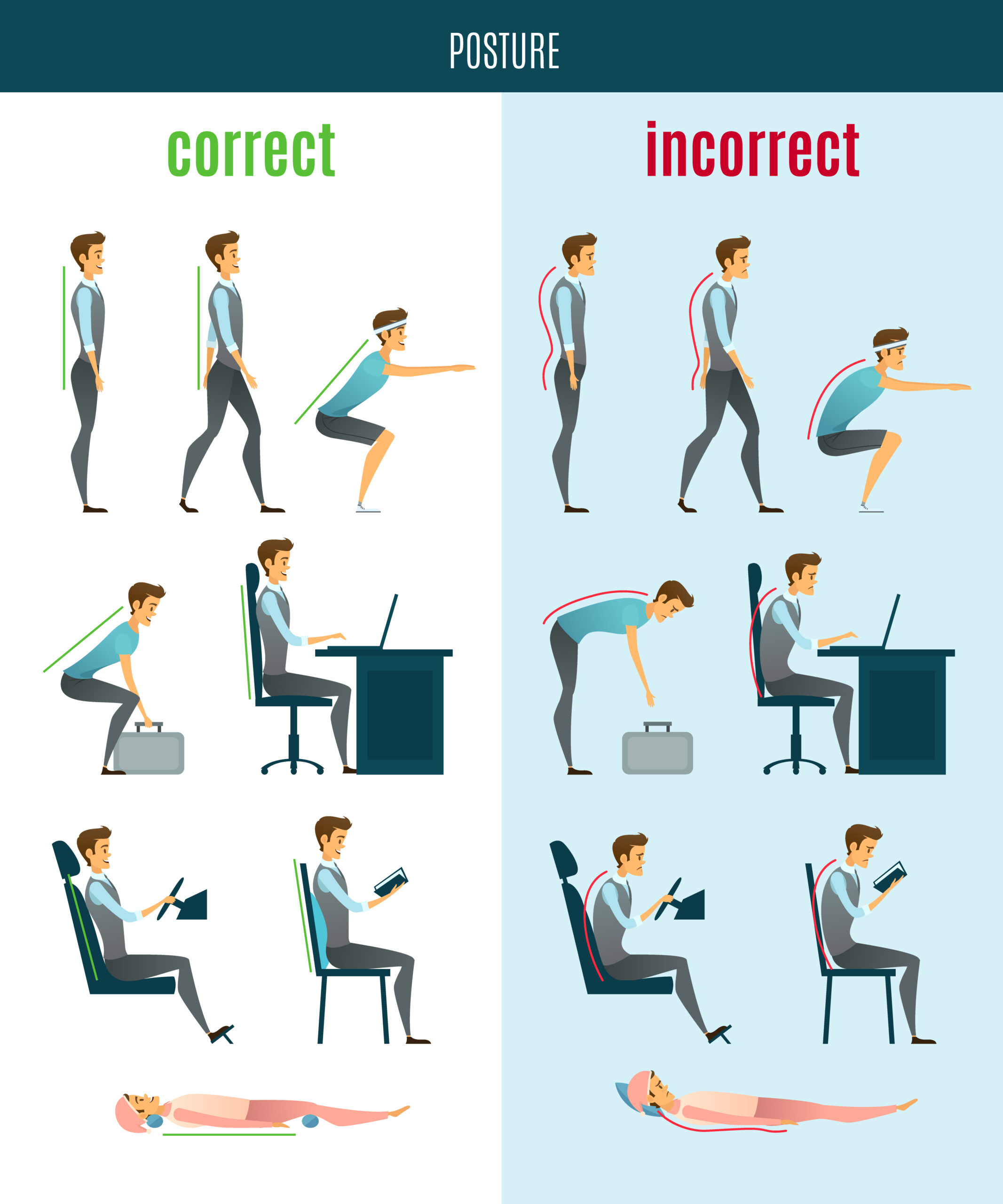The debate between sitting and standing postures has gained significant attention in recent years, particularly with the rise of sedentary lifestyles and modern ergonomic innovations like standing desks. Understanding the benefits, drawbacks, and myths surrounding both postures can help you make informed decisions about your health and productivity.
The Impact of Sitting on Health
Sitting for prolonged periods is a hallmark of modern work culture. While it may seem comfortable, extended sitting has been linked to various health issues, including:
- Cardiovascular problems: Reduced circulation due to sitting for long hours can lead to conditions such as deep vein thrombosis (DVT) and poor heart health.
- Musculoskeletal disorders: Poor posture while sitting often leads to back pain, neck strain, and tight hip flexors.
- Metabolic concerns: Prolonged sitting can slow down metabolism, increasing the risk of obesity, diabetes, and other metabolic disorders.
A key question often arises: is standing better than sitting for circulation? The answer depends on factors such as duration, posture, and overall activity level, which we will explore below.
The Case for Standing
Standing, as a posture, promotes more natural body alignment and activates muscles that remain dormant during sitting. Here are some notable benefits:
- Enhanced Circulation: Standing improves blood flow to the legs and reduces the risk of swelling and circulation-related issues.
- Increased Calorie Burn: According to studies, standing burns more calories than sitting. For instance, standing vs. sitting calories burned in an hour can vary by up to 50%.
- Improved Core Engagement: Standing activates core muscles, potentially reducing back pain and improving posture.
The Rise of Standing Desks
Standing desks have become a popular solution for reducing sedentary behavior in workplaces. While they offer various advantages, there are standing desk benefits debunked by some researchers. For example:
- Myth: Standing desks alone lead to significant weight loss.
- Reality: While standing does burn more calories, it is insufficient for weight loss without additional physical activity.
- Myth: Standing desks eliminate back pain.
- Reality: Incorrect posture while standing can still result in discomfort.
Below is a table comparing key aspects of sitting and standing postures:
| Aspect | Sitting | Standing |
|---|---|---|
| Calorie Burn (per hour) | ~80 | ~120 |
| Circulation | Reduced | Improved |
| Back Pain Risk | Higher if posture is poor | Lower but depends on posture |
| Energy Levels | Tends to drop with prolonged sitting | Increased with standing breaks |
Disadvantages of Standing Desk
While standing desks have their benefits, they are not without drawbacks:
- Leg and Foot Pain: Prolonged standing can lead to discomfort in the legs, feet, and lower back.
- Varicose Veins: Standing for long periods increases pressure in the veins, potentially causing varicose veins.
- Postural Fatigue: Maintaining a standing posture for extended durations can result in muscle fatigue and joint discomfort.
The disadvantages of standing desk usage emphasize the importance of moderation and proper ergonomic adjustments.

Finding a Balance: Sit-Stand Workstations
Many experts recommend alternating between sitting and standing throughout the day. Here are practical tips:
- Use Sit-Stand Desks: These allow you to switch postures effortlessly.
- Set Timers: Use reminders to change positions every 30-60 minutes.
- Incorporate Movement: Take short walks or stretch to break up static postures.
Benefits of Standing Desk vs Sitting
When used correctly, standing desks can offer significant health advantages:
- Reduced risk of obesity and metabolic disorders.
- Enhanced energy and focus during work.
- Improved posture and reduced risk of back pain.
However, prolonged standing can negate these benefits. Understanding the balance is crucial.
Benefits of Standing While Working
Incorporating standing into your work routine can have positive outcomes:
- Better Circulation: A standing position allows for improved blood flow, answering the query, is standing better than sitting for circulation? Yes, to an extent.
- Increased Productivity: Standing can boost alertness and reduce feelings of fatigue.
Benefits of Standing for a Long Time
Standing for extended periods engages muscles and promotes blood flow, which can be beneficial when done mindfully. However, excessive standing without breaks can lead to negative effects, emphasizing the need for moderation.
FAQs on Sitting vs. Standing
1. Is standing better than sitting for weight loss?
Standing burns more calories than sitting, but the difference alone is not enough for significant weight loss without additional activity.
2. What are the disadvantages of standing desk setups?
Prolonged standing can cause leg pain, fatigue, and varicose veins if not managed properly.
3. What are the benefits of standing desk vs sitting?
Standing desks can improve posture, energy levels, and reduce the risk of certain health issues associated with prolonged sitting.
4. How can I avoid the disadvantages of standing desk usage?
Use anti-fatigue mats, wear supportive footwear, and alternate between sitting and standing.
5. Are the benefits of standing while working scientifically proven?
Yes, standing can improve circulation, energy levels, and muscle engagement, but it’s essential to balance it with sitting and movement.


